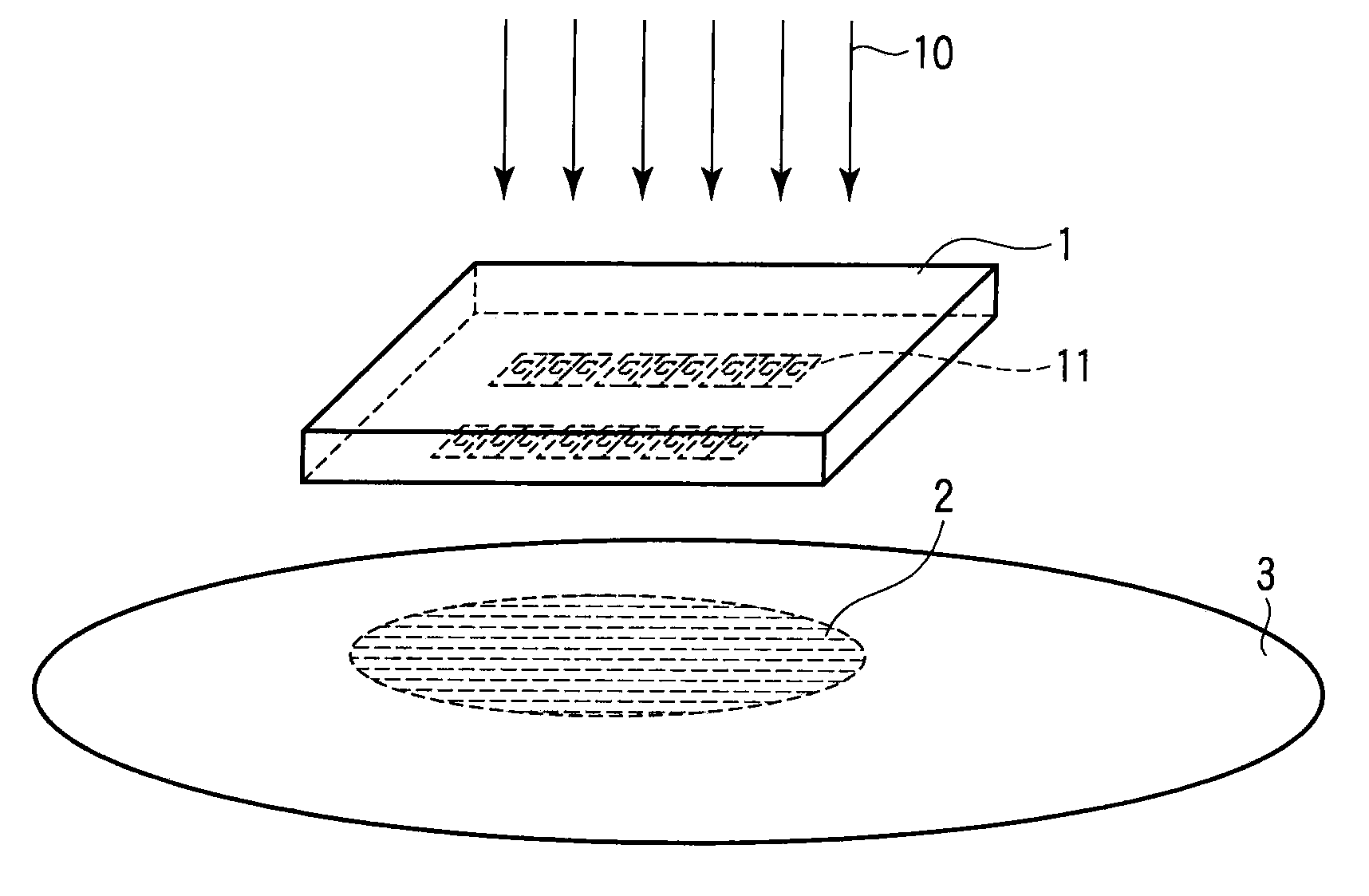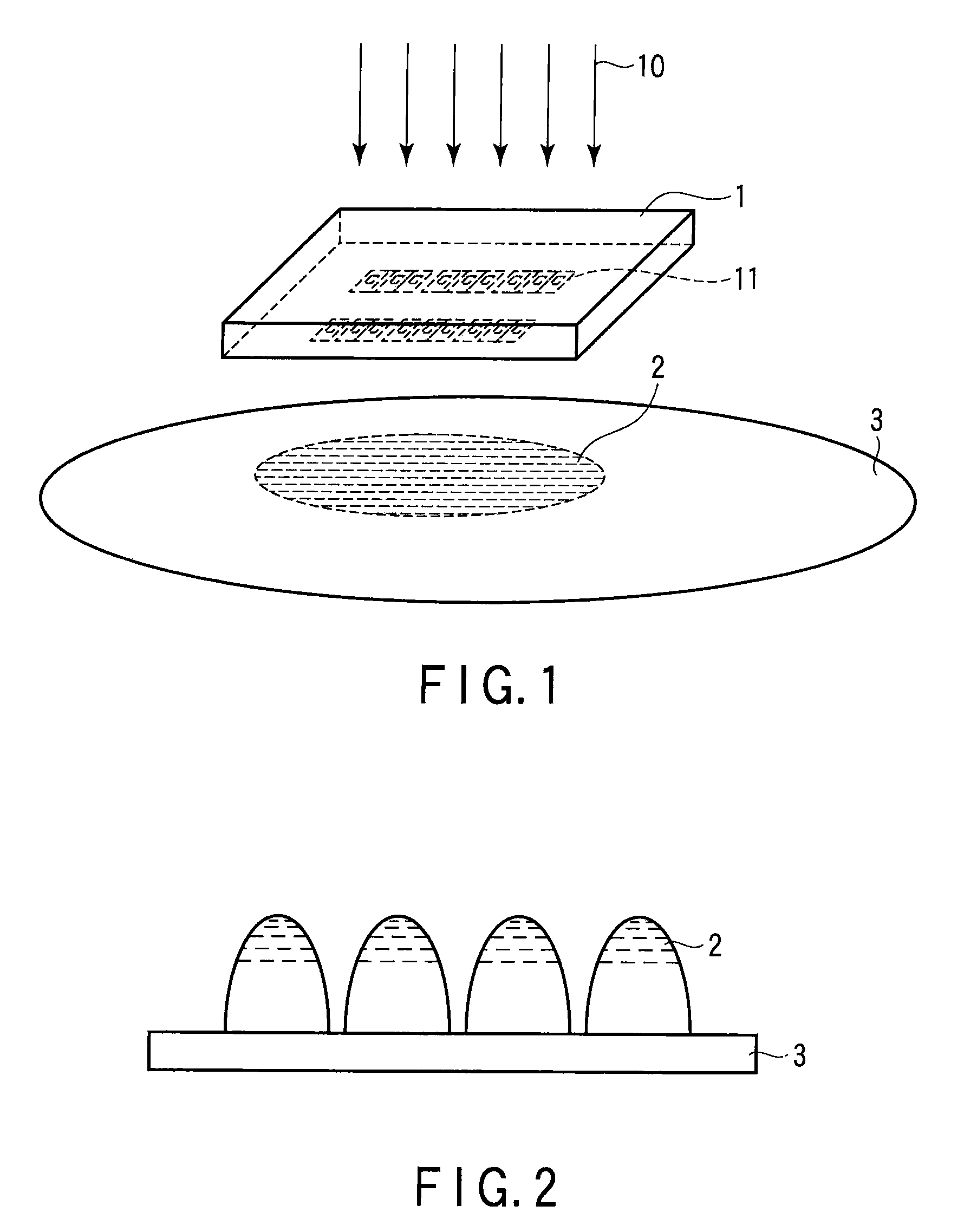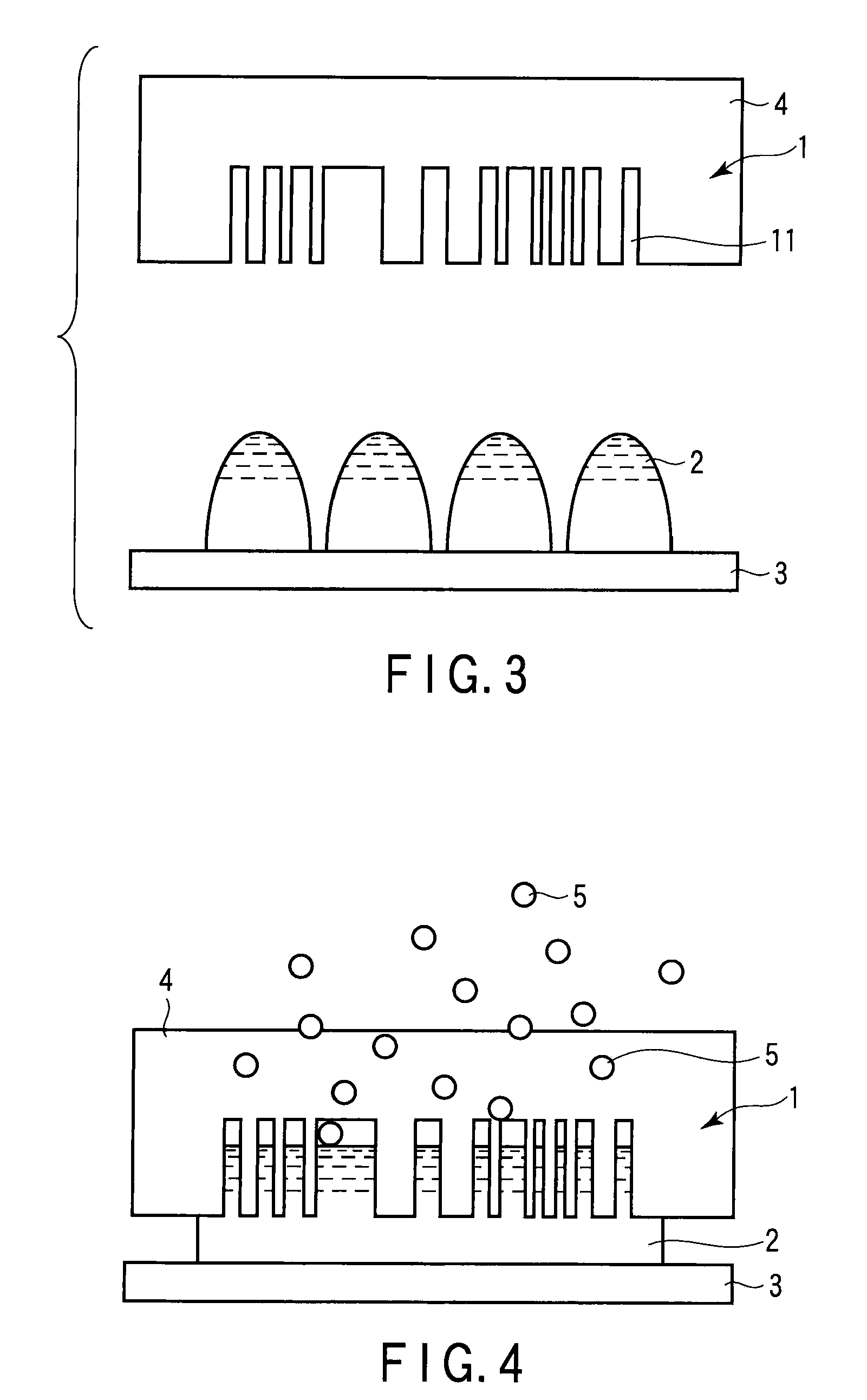Imprinting mold and pattern formation method
- Summary
- Abstract
- Description
- Claims
- Application Information
AI Technical Summary
Benefits of technology
Problems solved by technology
Method used
Image
Examples
first embodiment
[0035]FIG. 1 is a view showing the positional relationship between a mold 1 for optical imprinting, a concave and convex pattern 11 formed on the mold 1 and corresponding to a pattern to be transferred, an imprinting agent 2 coated on a substrate 3 to be processed, and light 10 for curing the imprinting agent 2. FIGS. 2 to 6 are sectional views for explaining a pattern formation method of this embodiment. These sectional views are equivalent to side views of FIG. 1.
[FIG. 2]
[0036]The imprinting agent 2 is applied on the substrate 3 to be processed.
[0037]In this embodiment, the imprinting agent 2 is a photocuring resin (photocuring imprinting agent). Also, in this embodiment, the imprinting agent 2 is applied shot by shot by an inkjet method. Note that the method of this embodiment is also applicable to a method by which the entire surface of the substrate 3 is coated with the imprinting agent 2 by spin coating.
[0038]The substrate 3 to be processed is a semiconductor substrate such as...
second embodiment
[0058]FIGS. 7 and 8 are sectional views for explaining a pattern formation method according to the second embodiment of the present invention. Note that the same reference numerals as in the above-mentioned drawing denote the same parts in the following drawing, and a repetitive explanation will be omitted.
[0059]The difference of this embodiment from the first embodiment is to positively control a gas permeating through a mold 1.
[0060]FIG. 7 shows a method by which in the step of releasing the mold 1, the ambient pressure on the upper surface of the mold 1 is made higher than that between the mold 1 and an imprinting agent 2, and the pressure between the mold 1 and imprinting agent 2 is raised by injecting a gas 5 between them so as to force the cured imprinting agent 2 out of the mold 1, thereby more effectively suppressing the occurrence of a mold defect.
[0061]FIG. 8 shows a method by which in the step of filling the imprinting agent 2 in a concave and convex pattern of the mold 1...
third embodiment
[0062]FIG. 9 is a sectional view for explaining a pattern formation method according to the third embodiment of the present invention.
[0063]The difference of this embodiment from the first embodiment is to use a mold 1 containing a gas 5 to such an extent that the gas 5 is saturated. Since the mold 1 containing the gas 5 is used, the gas 5 in the mold 1 leaks in the step of filling an imprinting agent 2, thereby forming a gas layer 51 between the mold 1 and imprinting agent 2. This makes it possible to prevent the imprinting agent 2 from partially remaining in recesses of the mold 1, and obtain the same effect as that of the first embodiment. The method of this embodiment has the advantage that even when the gas permeability of the mold 1 itself is low, the occurrence of a mold defect can effectively be suppressed by the assistance of the gas layer 51.
[0064]The same effect can also be obtained by forming the gas layer 51 between the mold 1 and imprinting agent 2 by holding the gas p...
PUM
| Property | Measurement | Unit |
|---|---|---|
| Pressure | aaaaa | aaaaa |
| Flow rate | aaaaa | aaaaa |
| Size | aaaaa | aaaaa |
Abstract
Description
Claims
Application Information
 Login to View More
Login to View More - R&D
- Intellectual Property
- Life Sciences
- Materials
- Tech Scout
- Unparalleled Data Quality
- Higher Quality Content
- 60% Fewer Hallucinations
Browse by: Latest US Patents, China's latest patents, Technical Efficacy Thesaurus, Application Domain, Technology Topic, Popular Technical Reports.
© 2025 PatSnap. All rights reserved.Legal|Privacy policy|Modern Slavery Act Transparency Statement|Sitemap|About US| Contact US: help@patsnap.com



